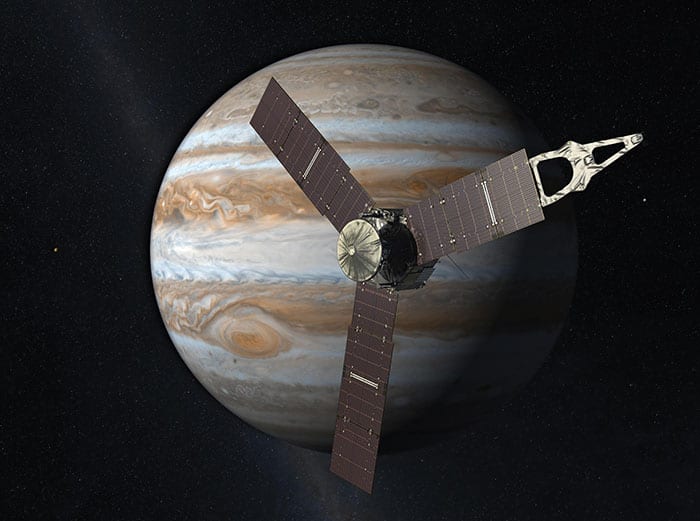
Five amateur astronomers from South America and Europe have captured a burst of light on Jupiter that was the result of an asteroid crashing into the planet’s atmosphere. It is thought that the flash on 13 September – known as a meteor “bolide” – may have been created by a body tens of metres across. It is only the seventh time in history that observers have recorded an impact flash on the gas giant.
José Luis Pereira from Brazil is among those to image the impact. On the evening of the 13 September he was recording videos of the planet with a 275 mm-aperture Newtonian telescope when he spotted a “glow” in one of the captures. “At the time I didn’t give it much importance because I thought it was something related to the capture parameters due to bad weather conditions,” he told Physics World.
I was extremely emotional as it’s something I’ve wanted to discover for many years
José Luis Pereira
Pereira nevertheless ran the data through software that is designed to look for impact flashes on Jupiter, which alerted him to a possible event in one of the videos. Pereira subsequently got in touch with fellow amateur astronomer Marc Delcroix, who leads the development of the DeTeCt program, who was able to confirm his finding. “I was extremely emotional as it’s something I’ve wanted to discover for many years,” says Pereira. “It doesn’t even feel like it’s real.”
Impact zone
Delcroix adds that as well as the five observers who independently discovered the impact, another four also uncovered signs of it in their data after news of the event got out. The detection of the bolide on the Solar System’s largest planet highlights the growing success of regular, international, observing campaigns by amateur astronomers. It also marks the second time that DeTeCt has been involved in identifying a fireball on Jupiter – the other being the discovery, by a US-based astronomer, of an impact flash in 2019.
Delcroix says some 140 observers currently send him their results from using DeTeCt, with the number of users growing appreciably after this latest event. “My hope is to have a more generalised usage of DeTeCt to maximise the number of impacts detected and get a more robust impact frequency estimation on Jupiter,” he says.
As well as aiming to increase the number of astronomers involved in the DeTeCt project, Delcroix hopes that observers will use the software to expand the hunt for meteor fireballs on another of the gas giants, Saturn. If that search proves fruitful, we may soon see – in addition to the seven impact events so far detected on Jupiter – the first discovery of a bolide in the Saturnian skies. Brave new Jupiter
Impact studies can provide important data for researchers trying to understand the nature of the more remote parts of our planetary neighbourhood.
“[Observing impacts] tells us something about the present-day population of small bodies in the outer Solar System, and reveals the dynamic nature of these systems,” says Leigh Fletcher, a planetary scientist at the University of Leicester. “If we see larger bodies impacting, this provides an excellent opportunity to study the atmospheric response to the energy and chemistry of these impactors.”



